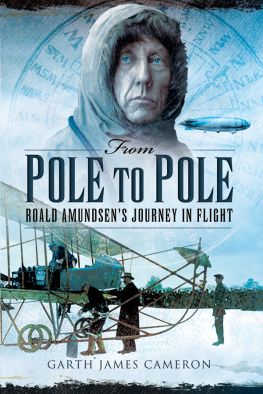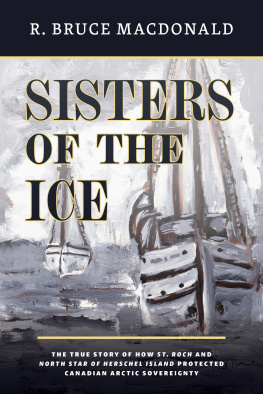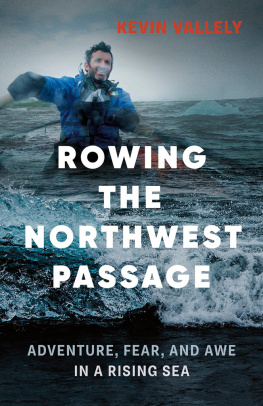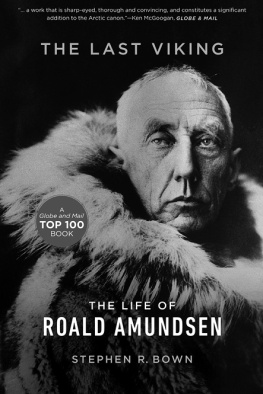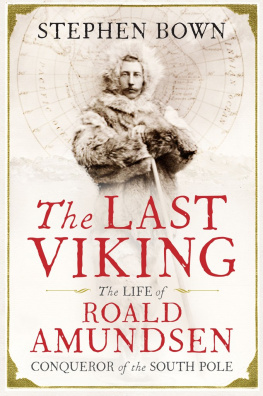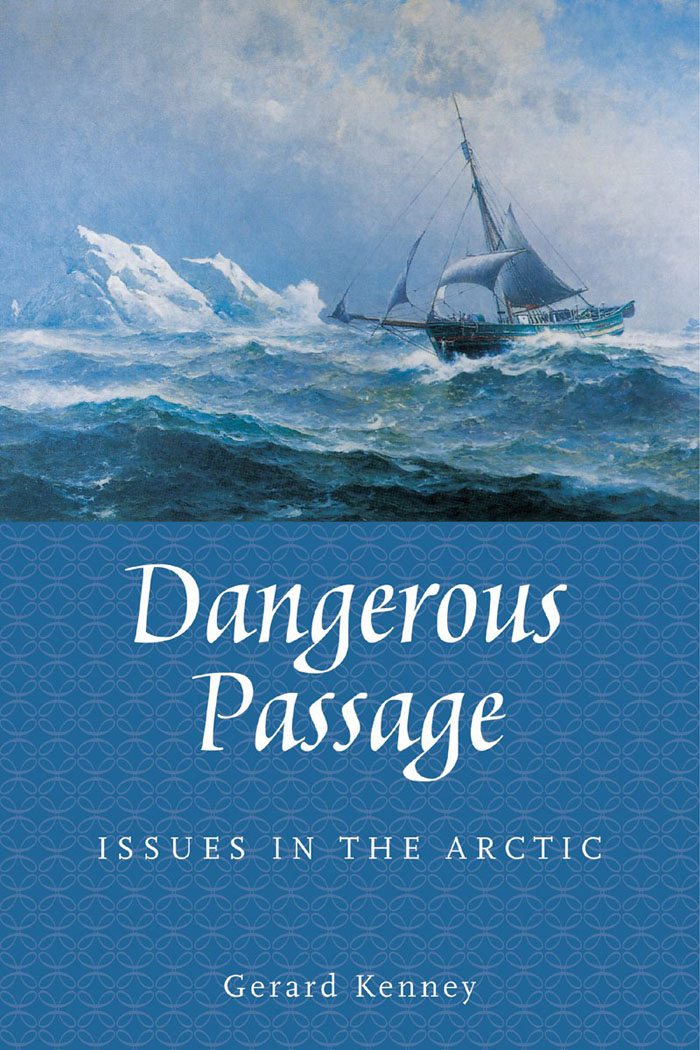Dangerous Passage
Dangerous Passage
ISSUES IN THE ARCTIC
Gerard Kenney

NATURAL HERITAGE BOOKS
TORONTO
Copyright 2006 Gerard Kenney
All rights reserved. No portion of this book, with the exception of brief extracts for the purpose of literary or scholarly review, may be reproduced in any form without the permission of the publisher.
Published by Natural Heritage / Natural History Inc.
P.O. Box 95, Station O, Toronto, Ontario M4A 2M8
www.naturalheritagebooks.com
Library and Archives Canada Cataloguing in Publication
Kenney, Gerard I., 1931
Dangerous passage : issues in the Arctic / Gerard Kenney.
Includes bibliographical references and index.
ISBN 1-897045-13-1
1. Northwest Passage. 2. Northwest PassageDiscovery and exploration. 3. Territory, NationalCanada, Northern. 4. Environmental policyNorthwest Passage. I. Title.
FC3963.K448 2006 909'.096327 C2006-901176-1
Front cover: Gja Sailing the Northwest Passage, Lauritz Haaland, artist, 1906. Courtesy of the Fram Museum, Oslo, Norway.
Back cover: The Louis St. Laurent, Canadas largest icebreaker. Courtesy of the Canadian Coast Guard.
Cover and text design by Sari Naworynski
Edited by Jane Gibson
Printed and bound in Canada by Hignell Book Printing of Winnipeg

Natural Heritage / Natural History Inc. acknowledges the financial support of the Canada Council for the Arts and the Ontario Arts Council for our publishing program. We acknowledge the support of the Government of Ontario through the Ontario Media Development Corporations Ontario Book Initiative. We also acknowledge the financial support of the Government of Canada through the Book Publishing Industry Development Program (BPIDP) and the Association for the Export of Canadian Books.
For Amanda, Jessica and young Cara my three darling girls
OTHER BOOKS BY GERARD KENNEY
Arctic Smoke & Mirrors (Prescott, ON: Voyageur Publishing, 1994)
Ships of Wood and Men of Iron (Toronto: Natural Heritage Books, 2005)
CONTENTS
LIST OF MAPS

Routes taken by Roald Amundsen and Henry Larsen in the Northwest Passage. Map by Tim West.

Detailed map of the area surrounding Gjoa Haven. Map by Tim West.
Foreword
In 2005, the Governor General of Canada, Her Excellency Adrienne Clarkson, on a trip to Nunavut had a cairn built at the edge of the Arctic Ocean. Fifty years ago, His Excellency, Vincent Massey, on his first trip as Governor General to the Canadian Arctic, had a canister dropped on the polar ice as a much less certain declaration somewhat like the triangle at the top of Canadian maps of the day with their apex at the North Pole. Mr. Massey said his purpose was to let the Americans know that Canada owns the High Arctic. It would not have had much weight in a legal context much less than the voyages of the Gja and the St. Roch. However, the actions of governors general of our times are outward evidence of the continuing fact that Canada cannot be complacent about recognition of its sovereignty if global warming and dramatically shifting international oil prices alter the physical and economic circumstances of our Arctic.
There seems to be little doubt that the circumstances are indeed changing and that Canada will have to develop policies that will take into account all their many aspects and implications. Public knowledge and interest, neither of which exists at present, will be important for developing meaningful policies. Dangerous Passage is a significant contribution to both.
Gordon Robertson
Deputy Minister of Northern Affairs and National Resources,
and Commissioner of the Northwest Territories, 19531963.
Acknowledgements
Dr. George Hobsons much appreciated work of verifying the manuscript for this book was invaluable in ensuring its historical accuracy. For this I am very grateful. That said, I remain responsible for any inaccuracies that may have inadvertently been included in the final version.
Many thanks go to my friend and neighbour, Tim West, who spent many hours of his time creating excellent maps that allow the reader to follow the voyages of both Roald Amundsen and Henry Larsen as they sailed the dangerous passage.
Doreen Riedel was as helpful as usual with the part concerning her father, Henry Larsen, and his many adventures. Bernard Collin of the Canadian Coast Guard gets deserved thanks for finding and providing photographs of Arctic ships and a polar bear for Part III of the book. A thank you to Kre Berg for permission to use two images from his book Heroes of the Polar Wastes, to the University of Toronto Press for permission to use a map from Memoirs of a Very Civil Servant by Gordon Robertson and to Fogartys Cove Music for permission to use an excerpt from Stan Rogers Northwest Passage.
My publisher/editors, Barry Penhale and Jane Gibson deserve a lot of credit for taking a bunch of words and some photos, and turning them into an attractive book, and for converting a business affair into a friendship in the process.
And finally the whole crew at Library and Archives Canada are much appreciated for their needed assistance in my research for textual and photographic items without which, the book could never have been written.
Introduction
One hundred years ago, in 1906, Norwegian Roald Amundsen emerged from the Arctic mists to announce to the world that he, and five crew members, in his tiny ship, Gja, had completed the first sea transit ever of the Northwest Passage, from ocean to ocean, Atlantic to Pacific.
Over the five hundred or so years that man searched for an elusive sea passage from Europe to Asia through the North American land mass, dozens of ships were lost and hundreds of mariners died in the search. The goal was understandable. It was an economic goal to find a shorter, cheaper and more practical trading route between Europe and the Orient than those existing at the time. The two main routes at the time were: first, the extremely difficult and dangerous overland route, and later the extremely long and treacherous sea route around the Cape of Good Hope. Was there a better route?
Surely if the earth were round, one could sail from Europe to the Orient by going west rather than east. There was a major obstacle, though the North American continent was squarely in the way. Imaginative dreamers got around that difficulty. In 1500, they imagined away any constraints by dreaming up a water route clear through the North American mainland leading to a short sea voyage to the Orient at the western end. They even gave this mythical passage a name the Strait of Anian. It was just a matter of finding it.
The myth of Anian persisted until the latter part of the eighteenth century when Samuel Hearne walked 2,900 kilometres (1,800 miles) northwest from Hudson Bay to the mouth of the Coppermine River on the Arctic Ocean without crossing any such body of water. Hearnes findings laid Anian in its grave, but they still did not kill the desire to find a shorter sea route between Europe and the Orient. The search merely shifted to the waters of the Arctic Archipelago north of the Canadian mainland. Finding such a sea route took on an aura of national pride and glory as Great Britain sent a large number of expeditions into the Arctic in the 1800s to look for the Northwest Passage, as the Brits dubbed it.


